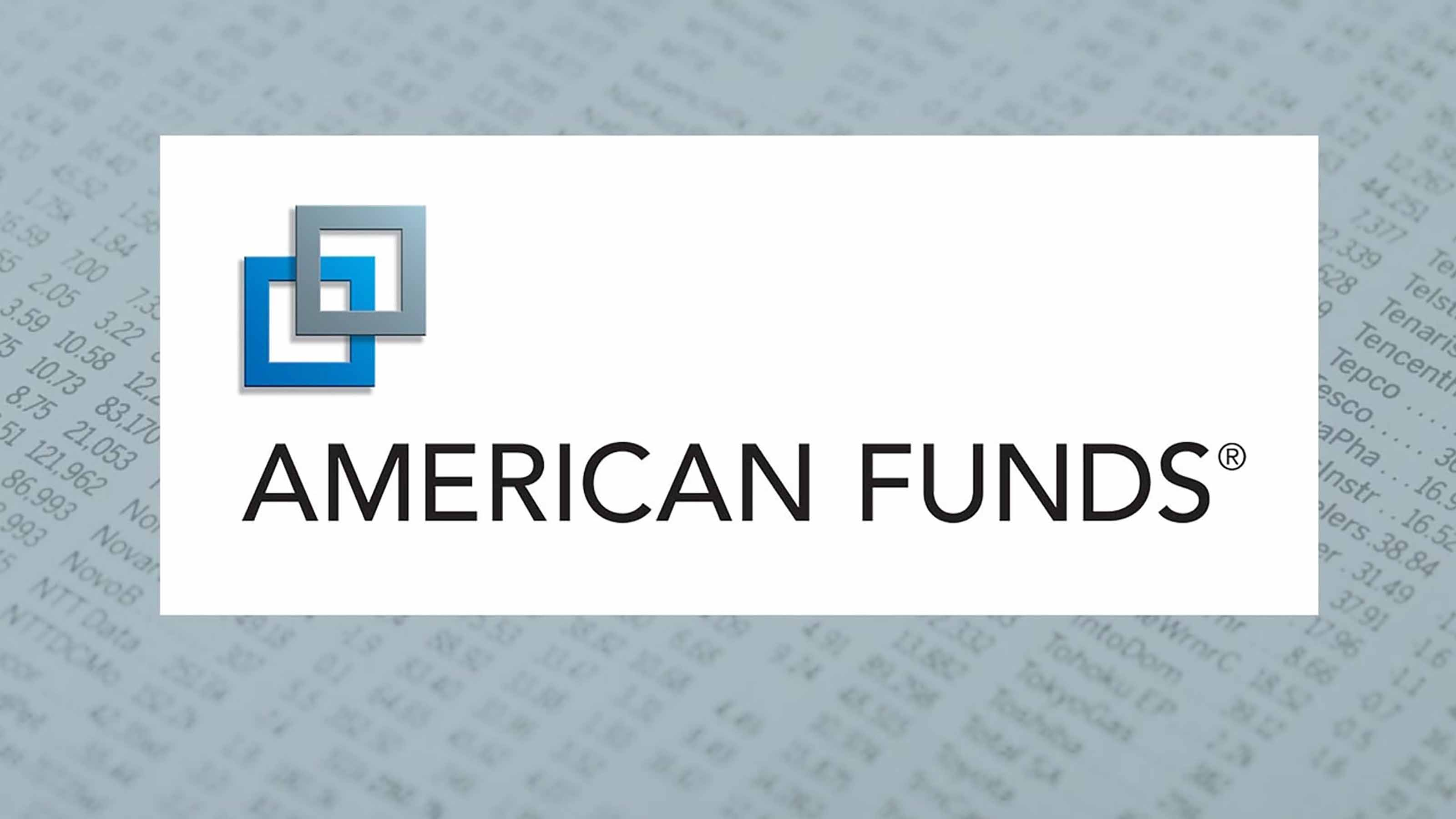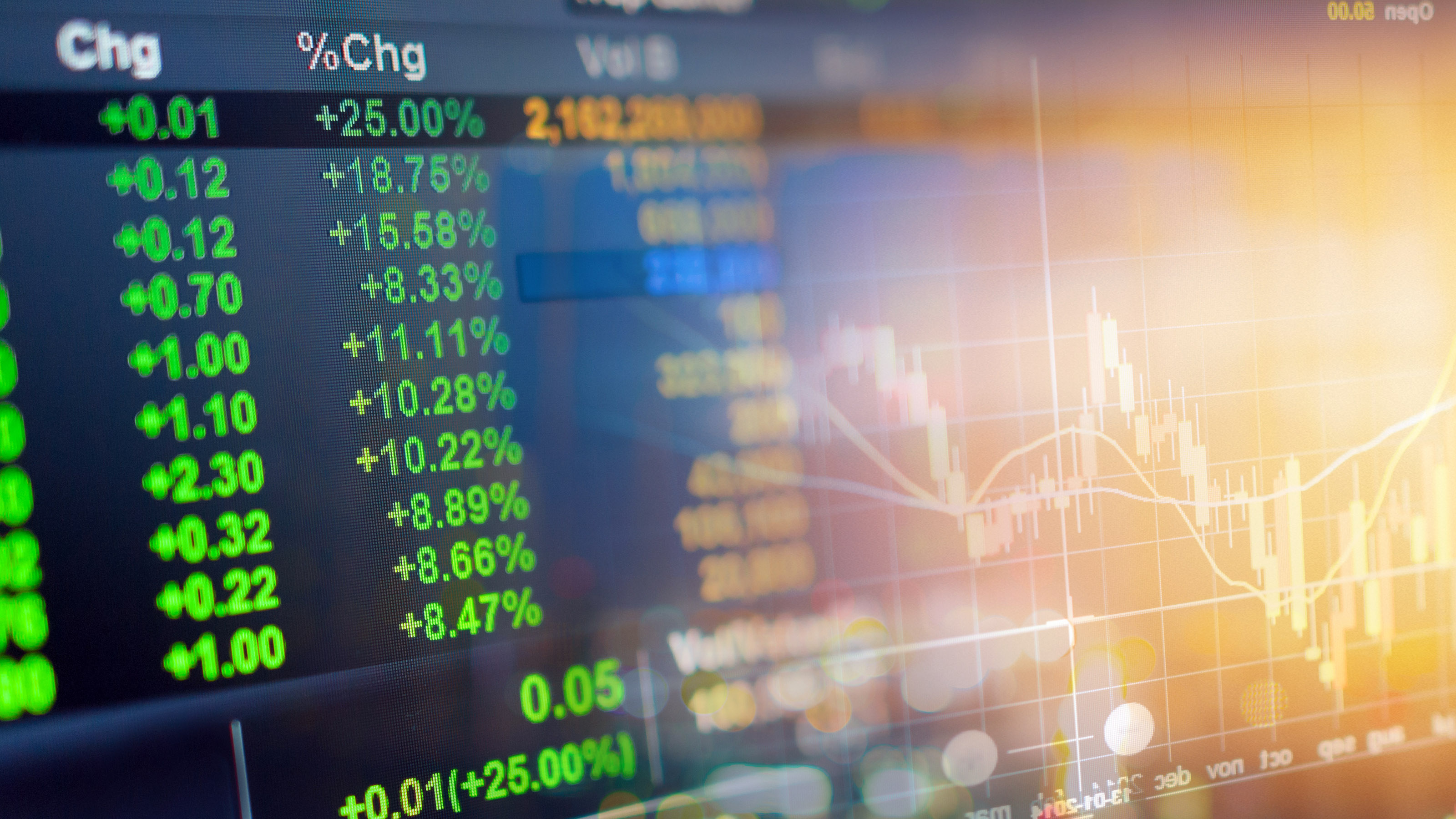The Best American Funds for 401(k) Retirement Savers
American Funds has 13 actively managed mutual funds among the 100 most popular 401(k) offerings. We look at the best American Funds in that group … as well as some of the laggards.


We don't write about American Funds much on Kiplinger.com or in the pages of Kiplinger Personal Finance magazine. That's because these funds, which are managed by parent company Capital Group, are primarily sold through advisers.
For years, the funds charged a front-end load (to compensate those advisers), which made it ineligible for recommendation in our book – literally. Now, however, at some brokerage firms, you can buy a no-load share class for no transaction fee.
But American Funds is a powerhouse in the 401(k) world, where investors of all sorts can access them. Six of its funds appear among the 100 most widely held funds in employer-sponsored retirement savings plans; another seven of its target-date funds, American Funds Target Date Retirement series, also rank among the top 100. In this, our annual review of the biggest 401(k) funds in America – a list that comes courtesy of financial data firm BrightScope – we take a closer look at the most popular funds from Capital Group.
First, some explanation of how the Capital Group operates is necessary because it's unique. Using a process the company calls the Capital System, each fund is run by multiple managers, from as few as two to more than a dozen. Every manager runs a percentage of the fund's assets independently, within the broader guidelines of the fund's objectives. They're encouraged to invest alongside shareholders, too, and many managers have six figures or more of their own money invested in the funds they manage.
The company says its aim is to create a diversified portfolio that can produce good results with less volatility. It also means that even as assets grow in any given fund, the firm isn't forced to close it to new investors – Capital Group simply adds more managers. As a result, several American Funds portfolios are among the biggest funds in the country by assets.
As always, this story is meant to help retirement savers make good choices among the funds that are available in their 401(k) plan. And it is written with that perspective in mind. Look for our review of funds from other big firms in the 401(k) world: Fidelity, T. Rowe Price and Vanguard.
Now, let's explore some of the best American Funds products for your 401(k) plan … and some of the laggards, too.
Disclaimer
Returns and data are as of Nov. 11. In each review, we refer to the symbol, returns and expense ratio of the share class that is available to most investors. The reason for this is that the share classes of specific funds offered in 401(k) plans can vary, depending in part on the size of the plan.

American Funds American Balanced: BUY
- Symbol: ABALX
- Expense ratio: 0.58%
- 1-year return: 18.2%
- 3-year annualized return: 12.9%
- 5-year annualized return: 11.5%
- 10-year annualized return: 10.9%
- Rank among the top 401(k) funds: #31
- Best for: Investors who want an all-in-one fund that holds stocks and bonds
Like other balanced funds, American Funds American Balanced holds stocks and bonds. It is designed, say the managers in a recent report, "to serve as the complete portfolio of a prudent investor."
In other words: Buy shares in this fund, and you're done.
ABALX fine-tunes its blend of stocks and bonds to achieve three goals: conserve capital, provide current income and offer long-term growth. Keeping volatility at bay and delivering steady returns is also a priority. At last report, the fund held 65% of its assets in stocks, 32% in bonds and 3% in cash and other securities. The fund has a current SEC yield of 1.23%.
On the stock side, the fund typically tilts toward blue-chip companies, such as Berkshire Hathaway (BRK.B) and Royal Dutch Shell (RDS.A), that pay high dividends. But these value-oriented types of stocks have been a drag on the fund's performance as growthier stocks have been more in demand for the greater part of a decade. Still, the fund holds some shares in fast-growing companies, too, including Activision Blizzard (ATVI) and ASML Holding (ASML).
The bond side holds mostly investment-grade bonds (debt rated triple-A to triple-B). U.S. Treasuries comprise 10% of the fund's assets and act as the backbone of this side of the portfolio, which also includes corporate bonds, asset-backed and mortgage-backed securities, municipal bonds and foreign debt.
The portfolio's risk-aware positioning helped in early 2020, when both stocks and bonds plummeted in value during the pandemic's early days. American Balanced sank 22% between February and March 2020, while its typical peer – funds that allocate 50% to 70% in stocks – lost 24%. Indeed, the fund is a peer-beater. Over the past 10 years, American Balanced outpaced 85% of its peers with a 10.9% annualized return.
Critics might point out that the fund lags the return of its composite index – comprised of 60% of the S&P 500 index and 40% of the Bloomberg U.S. Aggregate Bond index – over the past 10 years. But that's understandable. The S&P 500 is top-heavy in growth companies such as Apple (AAPL), Amazon.com (AMZN), Google parent Alphabet (GOOGL) and Facebook parent Meta Platforms (FB). American Balanced owns shares in some of those companies, but nothing close to the hefty stakes these stocks take up in the S&P 500 index.
ABALX is among the best American Funds you can stash in your portfolio. As balanced funds go, it's a standout option.

American Funds EuroPacific Growth: BUY
- Symbol: AEPGX
- Expense ratio: 0.82%
- 1-year return: 17.0%
- 3-year annualized return: 17.0%
- 5-year annualized return: 13.4%
- 10-year annualized return: 9.5%
- Rank among the top 401(k) funds: #3
- Best for: International stock exposure
American Funds EuroPacific Growth is the biggest actively managed foreign stock fund in the country. But the Capital System of dividing a fund's assets among multiple managers has helped the fund stay competitive. Over the past five and 10 years, for instance, the fund has largely kept pace with its typical peer: funds that invest in large, foreign companies. And it beats the MSCI EAFE index of stocks in foreign developed countries.
Morningstar recently downgraded its rating on EuroPacific Growth, to Silver from Gold, because the category has become "increasingly competitive," says Tom Nations, an associate director of research.
Certainly, there are zippier foreign-stock funds available out there. But in a 401(k) plan, the investment choices, especially with foreign-stock funds, are typically limited to an actively managed fund and an index fund. So, the question for 401(k) investors is whether an investment in AEGPX is better or worse than an investment in an international-stock index fund.
On that, the verdict is clear: EuroPacific Growth beats Vanguard Total International Stock Index (VGTSX) over the past two, three, five and 10 years. What's more, during the recent bear market in early 2020, EuroPacific Growth fund held up better, with a 31.4% loss, compared with a 33.3% loss in Vanguard Total International Stock index fund.
AEPGX is among the best American Funds you can find in a 401(k) plan, and we don't expect that to change even though a longtime manager is stepping down at the end of 2021. Even after his departure, AEPGX will still have 10 managers.
Those managers each look for high-quality companies with good long-term growth prospects in Europe and the Pacific Basin. The fund holds mostly large companies – a byproduct of the fund's hefty assets, which were $189 billion at last report. ASML Holding, Taiwan Semiconductor (TSM) and AIA Group (AAGIY) are top holdings.

American Funds Fundamental Investors: SELL
- Symbol: ANCFX
- Expense ratio: 0.61%
- 1-year return: 29.0%
- 3-year annualized return: 17.7%
- 5-year annualized return: 16.2%
- 10-year annualized return: 14.8%
- Rank among the top 401(k) funds: #90
- Best for: Diversified equity exposure, but an S&P 500 index fund would have offered more reward for the risk over the past decade
American Funds Fundamental Investors emphasizes growth and income by investing in undervalued companies. Specifically, it favors firms that make in-demand, high-quality products, and boast good prospects for growth in sales or earnings that are underappreciated by the market.
U.S. stocks make up most of the portfolio. But the fund has the leeway to look overseas, which is why 19% of the fund's assets are invested in international companies in Europe, Canada, and Japan as well as emerging countries including Taiwan, India and Korea.
ANCFX has seven managers, but a "bevy" of recent manager changes – including three new portfolio managers named in 2020 – has resulted in a drop in rating from Morningstar analyst Alec Lucas, to Silver from Gold. Even so, Lucas still finds "this fund's flexible profile still makes it an attractive option."
We disagree. The fund has a value tilt, and value-oriented stocks have been a drag in recent years, relative to growth-oriented shares. It goes some way to explain why Fundamental Investors now lags the S&P 500 based on annualized returns over the past three, five and 10 years. But over that time, Fundamental Investors has been roughly as volatile as the index, too.
And on the income front, Fundamental Investors is only on par, offering the same 1.3% as a popular S&P 500 index fund.

American Funds The Growth Fund of America: HOLD
- Symbol: AGTHX
- Expense ratio: 0.61%
- 1-year return: TK%
- 3-year annualized return: TK%
- 5-year annualized return: TK%
- 10-year annualized return: TK%
- Rank among the top 401(k) funds: #17
- Best for: Aggressive investors willing to take on extra risk for higher returns
Growth stocks have driven broad market returns for the greater part of the past decade. That should bode well for American Funds The Growth Fund of America, which invests in large, growing companies. And indeed, over the past three, five and 10 years, Growth Fund of America has outpaced the S&P 500 index.
But performance has been lumpy, and that has us betwixt and between on Growth Fund of America, which is why we rate AGTHX a Hold.
The 400-stock portfolio – Microsoft (MSFT), Tesla (TSLA) and Facebook parent Meta are top holdings – has lagged the S&P 500 in five of the past 11 full calendar years (between 2020 and 2010). That said, its good years have more than made up for the bad, and over the past decade on an annualized return basis, the fund beats the S&P 500. A $10,000 investment in the fund 10 years ago would be worth nearly $51,000 today; a similar investment in Vanguard 500 Index fund would be worth just under $46,000.
And beating the index is precisely why investors choose to invest in actively managed funds.
If we were looking at potential funds for the Kiplinger 25, the list of our favorite actively managed funds, Growth Fund of America wouldn't get very far because it lags its peers. But assessing a fund's value in a 401(k) plan is a little different. We must compare it with the alternatives that you might have available to you in the plan. And typically, the choice is between an active fund, such as Growth Fund of America, and an index fund.
Our advice: Tilt toward Growth Fund of America, but be prepared to sit tight in the lean years, when this fund lags a comparable S&P 500 index fund. Otherwise, go for the index fund.

American Funds New Perspective: BUY
- Symbol: ANWPX
- Expense ratio: 0.76%
- 1-year return: 30.9%
- 3-year annualized return: 24.4%
- 5-year annualized return: 20.0%
- 10-year annualized return: 15.1%
- Rank among the top 401(k) funds: #56
- Best for: Global stock exposure
American Funds New Perspective fund splits its portfolio between U.S. and foreign stocks. It's a solid option for investors looking to beef up their foreign stock exposure, but who don't want to go all-in on a foreign-stock fund.
Seven managers divide the portfolio's $140 billion in assets and invest their own sleeve as they see fit. But they all must invest in companies that receive a meaningful share of sales and operations outside of their home base. Together they have constructed a roughly 300-stock portfolio of mostly large companies with above-average earnings growth. Tesla, Microsoft and Facebook are the fund's top holdings.
Next to its peers – funds that invest in foreign and U.S. large companies – New Perspective has stayed above average for the majority of each of the past 11 calendar years, making it one of the best American Funds for 401(k) investors. On an average-annual return basis, ANWPX's 15.1% 10-year return outpaces the typical world large-stock fund, which gained 13.6% annualized, as well as the MSCI ACWI index, which climbed 11.6% on average per year.

American Funds Washington Mutual Investors: HOLD
- Symbol: AWSHX
- Expense ratio: 0.58%
- 1-year return: 29.7%
- 3-year annualized return: 15.8%
- 5-year annualized return: 15.3%
- 10-year annualized return: 14.0%
- Rank among the top 401(k) funds: #54
- Best for: Older investors who want a low-volatility stock fund
There was a time when investors relished the safe, strict parameters that American Funds Washington Mutual follows for stock-picking. Though the fund launched in 1952, the rules it follows defining eligible prospective stocks stems from a Washington, D.C., court case following the Great Depression that established a list of high-quality stocks appropriate for investors. Though some of the rules have been relaxed over the years, the eligibility criteria are supposed to steer managers toward high-quality companies with solid balance sheets and that pay consistent, growing dividends.
In practice, the criteria result in a portfolio that's low on risk. But in recent years, when many of the market's high-flying stocks didn't pay dividends, AWSHX's guidelines have crimped overall returns.
Investors, particularly those who are young and still have decades to go before retirement are giving up too much in returns for a small relative improvement on risk. A broad U.S. stock-index fund would be a better option.
Over the past 10 years, for instance, Washington Mutual investors have experienced 10% less volatility. But in return, they have lagged a S&P 500 index fund by an average of 2.2 percentage points per year. In other words, a $10,000 investment 10 years ago in Washington Mutual would be worth almost $10,000 less than an investment in an S&P 500 index fund.
That said, older investors nearing retirement or already retired, who want to keep a toehold in the stock market, might find this American Funds product's strict approach to stock-picking appealing because it results in less volatility. That's why we have a Hold rating on AWSHX.

American Funds Target Date Retirement Series: BUY
- Rank among the top 401(k) funds: #39 (AAETX, 2030); #51 (AADTX, 2025); #55 (AAFTX, 2035); #58 (AAGTX, 2040); #70 (AACTX, 2020); #75 (AAHTX, 2045); #83 (AALTX, 2050)
- Best for: Best for savers who want to put their investments on autopilot
We've long been fans of the American Funds Target Date Retirement series. They're a solid choice for investors who want an expert to handle their retirement investments from start to finish – and well into retirement, too.
You pick the target-date fund with the year that's closest to when you plan to retire, then sit back and let experts take care of the rest. The managers of the target-date series will shift the blend of stock and bond funds over time to a more appropriate allocation as you get closer to retirement.
What sets American Funds' target-date series apart from others is its glide path – the prescribed shift in stocks and bonds over time in any given target-date series. Throughout the series, the firm's target-date funds hold considerably more in cash than their typical peer, but each of the portfolios also have a slightly more aggressive stock position.
For instance, the American Funds 2040 Target Date Retirement fund holds just under 6% of its assets in cash and 84% in stocks and 10% in bonds. The typical 2040 target-date fund, by contrast, holds 2% of its assets in cash, 75% in stocks, 13% in bonds and 10% in other diversified assets.
Interestingly, the series gets relatively more aggressive in its retirement years. The 2010 American Funds target-date fund, for instance, currently holds 9% in cash, but has a 40% stake in stocks, 50% in bonds and 1% in other assets. Compare that with the typical 2010 target date fund, which has the same cash allocation, 9%, but just 35% in stock, 53% in bonds and 3% in other assets.
What matters too, of course, is the outcome. And on that front, these funds deliver, returning above-average returns with below-average risk.
This target-date series is among the best American Funds has to offer, and is a solid choice for retirement savers who want a pro to do the work for them.
Learn more about American Funds Target Date Retirement at the Capital Group provider site.
Get Kiplinger Today newsletter — free
Profit and prosper with the best of Kiplinger's advice on investing, taxes, retirement, personal finance and much more. Delivered daily. Enter your email in the box and click Sign Me Up.

Nellie joined Kiplinger in August 2011 after a seven-year stint in Hong Kong. There, she worked for the Wall Street Journal Asia, where as lifestyle editor, she launched and edited Scene Asia, an online guide to food, wine, entertainment and the arts in Asia. Prior to that, she was an editor at Weekend Journal, the Friday lifestyle section of the Wall Street Journal Asia. Kiplinger isn't Nellie's first foray into personal finance: She has also worked at SmartMoney (rising from fact-checker to senior writer), and she was a senior editor at Money.
-
 The AI Doctor Coming to Read Your Test Results
The AI Doctor Coming to Read Your Test ResultsThe Kiplinger Letter There’s big opportunity for AI tools that analyze CAT scans, MRIs and other medical images. But there are also big challenges that human clinicians and tech companies will have to overcome.
By John Miley Published
-
 The Best Places for LGBTQ People to Retire Abroad
The Best Places for LGBTQ People to Retire AbroadLGBTQ people can safely retire abroad, but they must know a country’s laws and level of support — going beyond the usual retirement considerations.
By Drew Limsky Published
-
 What to Do With Your Tax Refund: 6 Ways to Bring Growth
What to Do With Your Tax Refund: 6 Ways to Bring GrowthUse your 2024 tax refund to boost short-term or long-term financial goals by putting it in one of these six places.
By Rachael Green Published
-
 What Does Medicare Not Cover? Eight Things You Should Know
What Does Medicare Not Cover? Eight Things You Should KnowHealthy Living on a Budget Medicare Part A and Part B leave gaps in your healthcare coverage. But Medicare Advantage has problems, too.
By Donna LeValley Published
-
 12 Great Places to Retire in the Midwest
12 Great Places to Retire in the MidwestPlaces to live Here are our retirement picks in the 12 midwestern states.
By Stacy Rapacon Published
-
 10 Cheapest Small Towns to Live In
10 Cheapest Small Towns to Live InThe cheapest small towns might not be for everyone, but their charms can make them the best places to live for plenty of folks.
By Dan Burrows Published
-
 15 Reasons You'll Regret an RV in Retirement
15 Reasons You'll Regret an RV in RetirementMaking Your Money Last Here's why you might regret an RV in retirement. RV-savvy retirees talk about the downsides of spending retirement in a motorhome, travel trailer, fifth wheel or other recreational vehicle.
By Bob Niedt Published
-
 The Cheapest Places To Retire in the US
The Cheapest Places To Retire in the USWhen you're trying to balance a fixed income with an enjoyable retirement, cost of living is a crucial factor to consider.
By Stacy Rapacon Published
-
 The Six Best Places to Retire in New England
The Six Best Places to Retire in New Englandplaces to live Thinking about a move to New England for retirement? Here are the best places to land for quality of life, affordability and other criteria.
By Stacy Rapacon Last updated
-
 13 Smart Estate Planning Moves
13 Smart Estate Planning Movesretirement Follow this estate planning checklist for you (and your heirs) to hold on to more of your hard-earned money.
By Janet Kidd Stewart Last updated
